Fight MASD wounds with the right system of products
Download our guide to help manage skin breakdown from moisture.
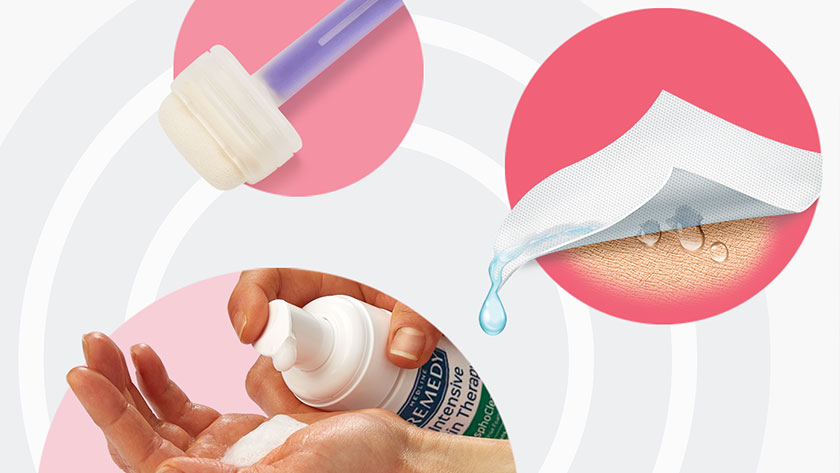
Healthy skin needs moisture, but too much can compromise skin integrity and cause harm. Moisture damage is often found with incontinence-associated dermatitis, but moisture can also be a problem for any age group and on many different areas of the body.
Moisture-associated skin damage is an umbrella term that describes the range of inflammatory damage that can occur after prolonged exposure of a patient’s skin to perspiration, urine, feces, wound exudate, saliva or mucus.
Know the 4 types of moisture-associated skin damage
There are four primary categories of masd wounds. Here’s a breakdown:
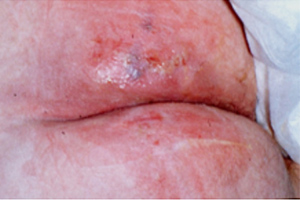
Incontinence-associated dermatitis (IAD) due to urine or stool around the groin, buttocks, inner thigh, perianal and perineal areas.
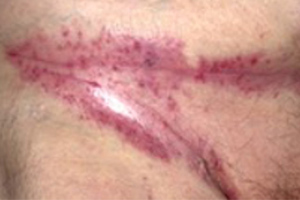
Intertriginous dermatitis (ITD or intertrigo) due to sweat that’s trapped in skin folds with minimal air circulation, leading to skin-on-skin friction.
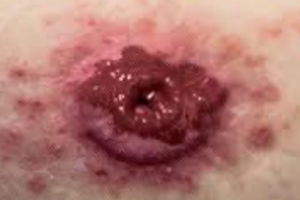
Peristomal dermatitis due to discharge around an ostomy.
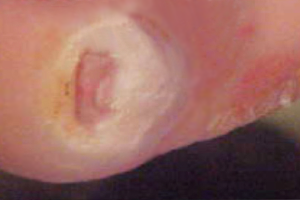
Periwound dermatitis caused by exudate at the edge of a wound.
Studies have shown that prevalence rates of IAD and ITD are particularly high in both acute and post-acute care settings.
40%
of hospital patients with ITD1
45.7%
of incontinent acute care patients with IAD2
51%
of nursing home residents with incontinence3
17%
of nursing home residents with ITD4
We’ve created a downloadable guide that can help you build confidence among staff to choose the right products that help improve skin health outcomes. Share it with your staff as a visual reference to help standardize your moisture management when it comes to common skin conditions.
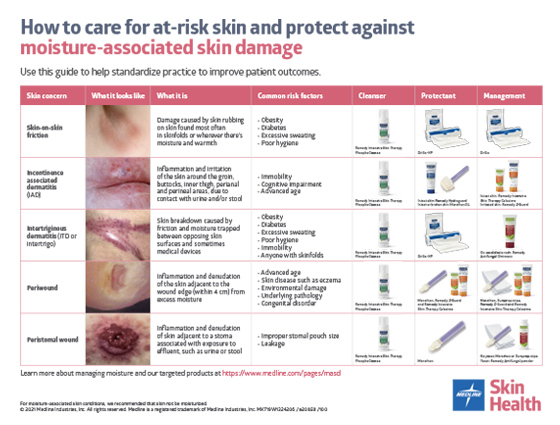
Tools that help prevent skin breakdown from moisture
Here are two proven tools that you can incorporate into your moisture management routine:
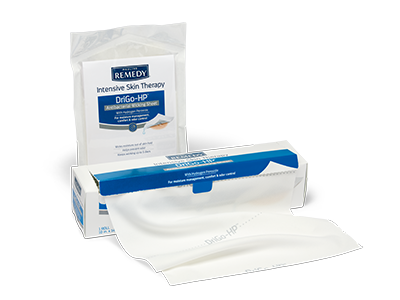
Remedy DriGo-HP Antibacterial Wicking Sheet is a fresh, lasting solution to skinfold issues with specially formulated hydrogen peroxide. It can be used to manage moisture and minimize skin-on-skin friction, which can potentially reduce the likelihood of ITD between skinfolds.
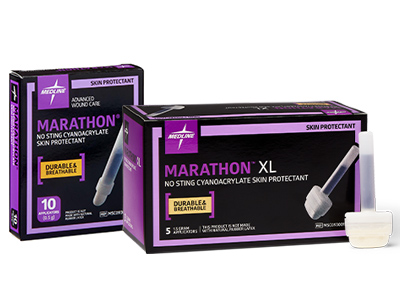
Marathon No-Sting Liquid Skin Protectant is a durable barrier to help prevent skin breakdown caused by friction or moisture. Unlike solvent-based barriers with only 5% to 10% cyanoacrylate, our 100% cyanoacrylate formula creates a more robust film on the skin with no visible gaps, protecting the skin better.
There are four main types of moisture-associated skin damage, as well as skin-on-skin friction that can cause skin breakdown in skinfolds. It’s important to recognize different skin conditions so you can prevent further damage with the right clinical strategies. You can use the guide as your reference.
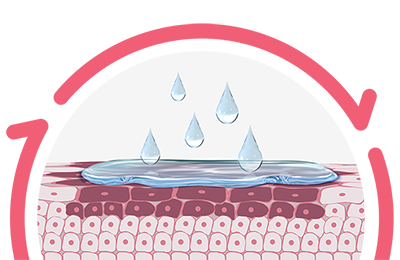
Key takeaway
Moisture-associated skin damage is a challenge in all care settings. When you have a clear system of products and protocol, your staff will feel more confident to help protect patients and promote better skin health outcomes. Download this guide.
Learn more about moisture-associated skin damage
Explore what more you can do to fight MASD
Read about incontinence care
See why a 100% cyanoacrylate formula performs better
